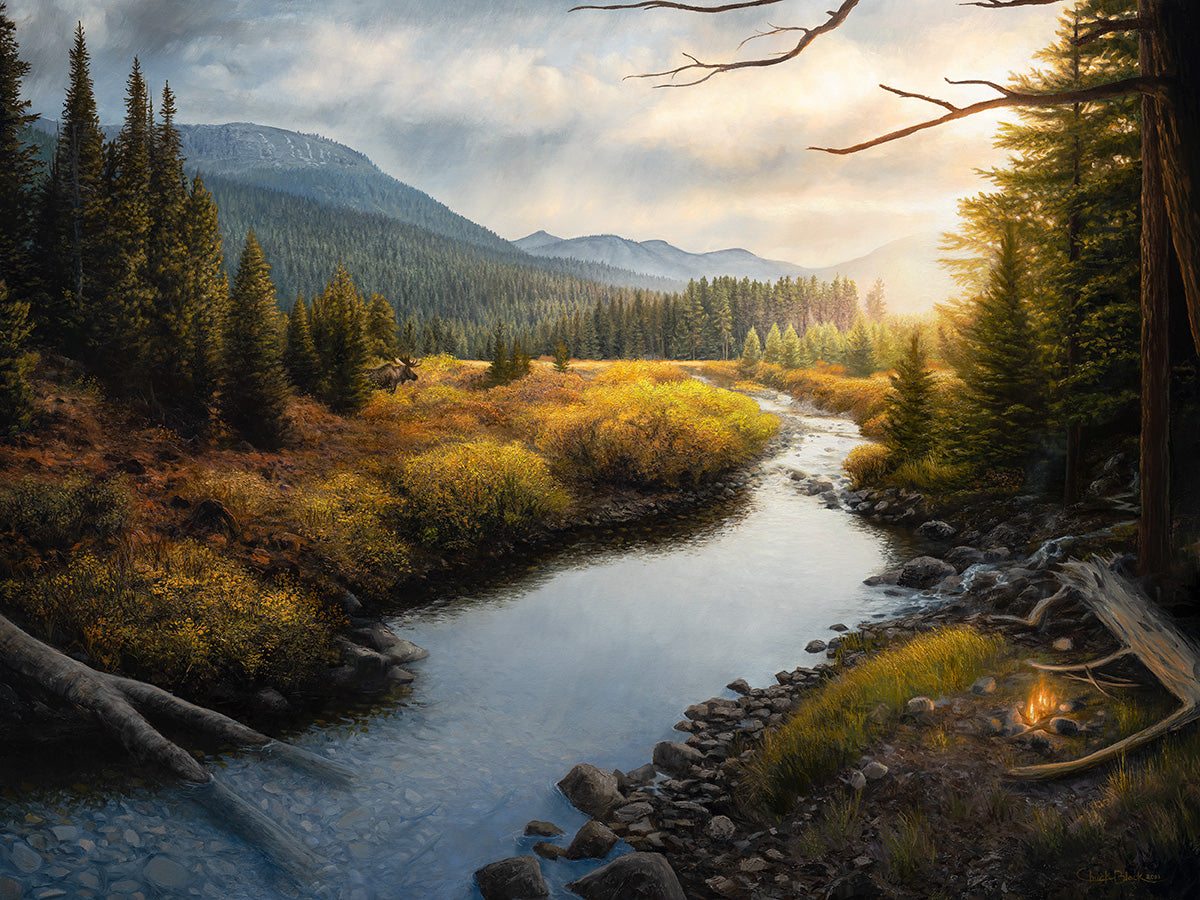This blog is supported through the affiliate links below
Why Toning The Canvas Sets The Stage For A Masterful Painting
Have you ever wondered why artists start a painting with a warm tone like burnt sienna? Well, you're not alone. I used to wonder the same for years when I was starting out. So while toning the canvas might seem like an optional step in the painting process, it's actually a crucial foundation that can make or break the final outcome of an artwork.

Over the years I've learned that the use of a warm tone like burnt sienna can create an inviting and cohesive atmosphere that sets apart the depth, highlights, and shadows for a painting. Let's dive into why toning the canvas is important, and why artists often choose burnt sienna as their go-to color for this foundational step.
Toning the canvas is a step that has been used by artists for centuries. It involves applying a thin, translucent layer of color to the canvas before painting. This helps to set the overall mood and atmosphere for the piece before getting started with color. This tone can greatly impact the final outcome of the painting which is why many artists choose to start with a warm tone, such as burnt sienna, to create a harmonious and inviting background.
Note: This blog contains affiliate links and purchasing through them supports our site at no extra cost to you.
What are the benefits of toning your canvas?
One of the main benefits of toning the canvas is that it helps to unify the overall feel of the painting. The tone can act as a merging layer that ties together all of the colors and forms throughout the painting. Without this layer, colors can appear disjointed or disconnected on the canvas, which may disrupt the cohesiveness of the piece. By starting with a tone, the artist can establish a strong foundation for what they're after while helping to create a sense of balance and unity in the painting.

Another advantage of toning the canvas is that it can help to establish the mood or atmosphere of a painting. The tone can greatly impact the feeling that the painting conveys, evoking different emotions and reactions from the viewer. For example, a warm tone can create a sense of comfort and coziness, while a cool tone such as blue can convey a sense of calm or tranquility. By choosing a tone that aligns with your desired mood and feeling, you can enhance the emotional impact of the painting and create a more engaging and memorable piece.
The use of a warm tone is particularly popular among artists because of its ability to create a welcoming and inviting sense of atmosphere. Burnt sienna is a reddish-brown color that is made by heating raw sienna, a natural earth pigment. It has a warm and comforting quality that can bring a sense of nostalgia and serenity. This tone is often used in landscape paintings, as it can evoke a sense of familiarity and connection to nature. It's also used in portrait paintings, as it can put the viewer at ease with it's pleasing color.

In addition to its emotional impact, burnt sienna also has practical benefits for artists. It is a relatively transparent color, which means that it can easily be layered on top of other colors without overpowering them. This makes it a useful color for creating a subtle underpainting that can help to establish the overall tone of the painting without dominating the final color scheme. Burnt sienna is also a versatile color that can be easily mixed with other colors to create a range of warm tones and shades.
How to tone your surface
The answer to this is a short and easy one. I've found that the quickest and most effective way to tone your canvas is to take your color of choice, some thinner, a shop towel, and scrub it on. This can be done with either acrylics or oils, but for acrylics, use water to thin the paint. I apply a good amount to the surface and then use the rag or towel to vigorously scrub it into the blank canvas/panel. I try to remove most of the paint, leaving a thin, luminous layer that lets the light shine through. At any time, if I need to loosen the paint up as I go, I'll dip the towel in a bit of thinner and continue working the surface.

It's important to note that while many artists choose to start with a warm tone such as burnt sienna, this is not a universal rule. The choice of tone is a personal one, and may vary greatly depending on the artist or even the individual painting. Some may prefer cool tones, such as blue or green, to create a sense of calm and tranquility, while others may opt for bright, bold tones to convey energy and excitement. Ultimately, the choice of tone should be guided by the mood and feeling that you as the artist wishes to convey through your work.

In essence, toning the canvas is a crucial step in the painting process that can greatly impact the final outcome of any artwork. By establishing a harmonious background and unifying the overall tone of the painting, artists can create a more dynamic piece of art.
Grow Your Painting Skills and Resources
Instant access to 1000s of royalty-free reference photos of landscapes and wildlife as well as step by step oil painting videos. Checkout My Memberships for more info.

I'm Chuck Black, landscape and wildlife artist based in Southwest Montana.






